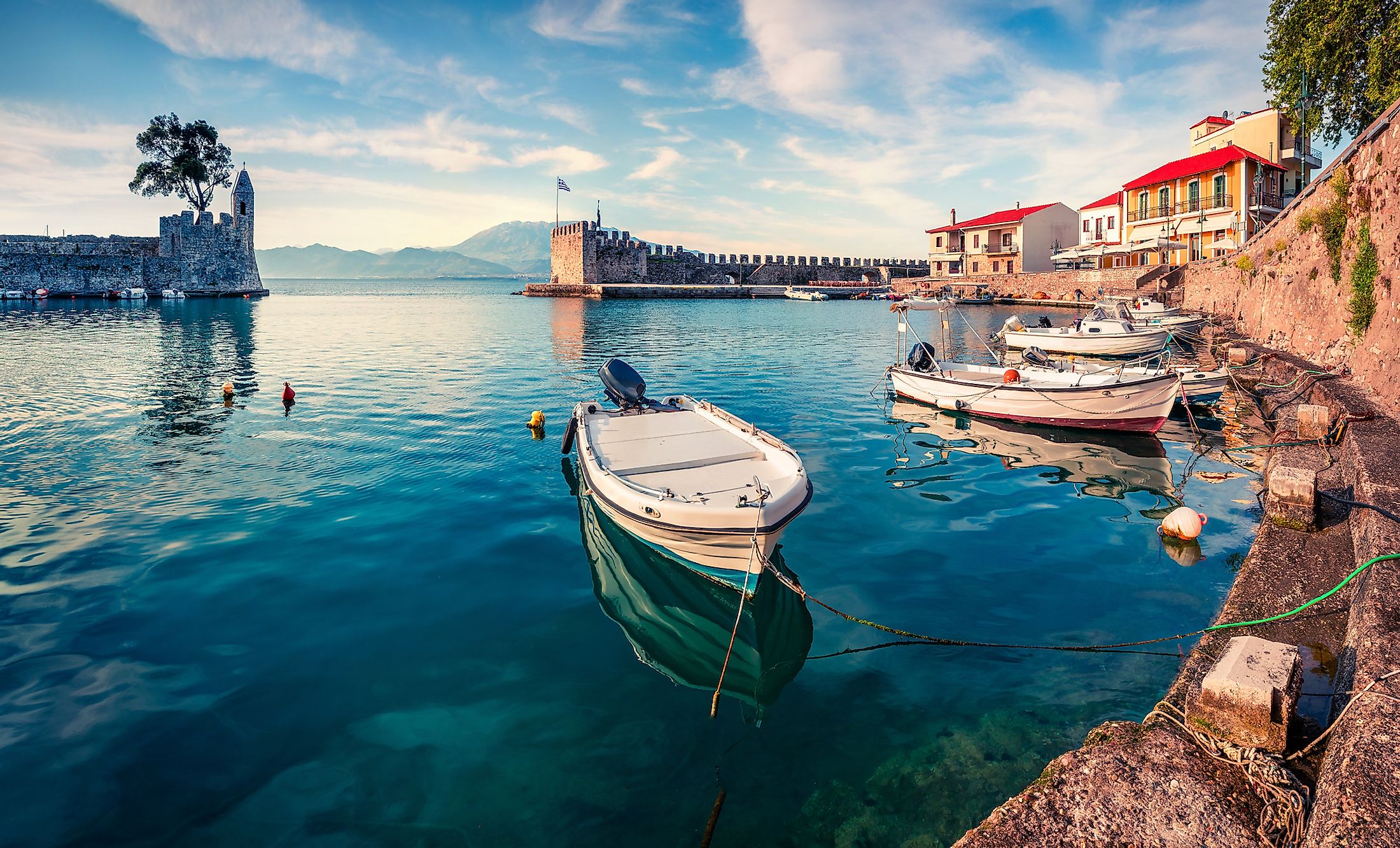
Gulf Of Corinth
If the ancient world's "corners" were the Atlantic Ocean and Eastern Asia, then that would place the Gulf of Corinth squarely at the center. As a gulf, this expansive body of water is recognizable in that landmasses surround it in a minimum of three directions. Due to its size and location, the Gulf of Corinth has played an essential role in trade and warfare for thousands of years, including modernity. However, the natural balance revolving around the Gulf's interaction with its adjacent climate and ecosystems is perhaps more primal than any previous or ongoing human interaction.
Geography
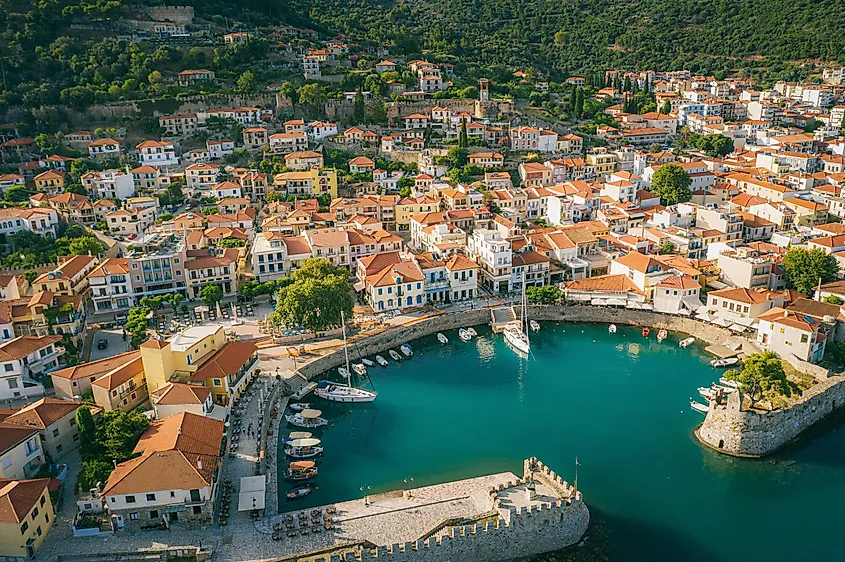
The Gulf of Corinth, an inlet of the Ionian Sea, separates the Peloponnese peninsula from the central region of mainland Greece. Stretching approximately 81 miles in length and reaching a maximum width of 20 miles, the Gulf covers a total area of about 930 square miles. The Gulf's narrowest point, known as the Strait of Rion or the Rio-Antirrio Strait, measures a mere 1.2 miles wide and connects the Gulf to the Ionian Sea in the west.
Settlements around the Gulf are as common as they are reasonable; the welcoming climate and available natural resources are historically attractive to human civilization. Today, the north coast is home to significant urban centers such as Galaxidi, Nafpaktos, and Itea. On the southern coast, major towns include Corinth, Kiato, and Loutraki. These cities and towns serve as gateways to the Gulf's coastal landscapes, which are notable for rocky cliffs, sandy beaches, and dense forests. To the east, Athens is approximately one "marathon" (26 miles) away.
Notably, the Gulf of Corinth features several islands, some of which are inhabited while others remain untouched. The largest of these islands, Trizonia, lies near the northern coast and covers an area of about 618 acres. It possesses an intimate bay for boats, places to eat, and several beaches. Other smaller islands, such as Agios Ioannis, Alkioni, and Daskalio, can be found scattered throughout the Gulf and are intriguing places to visit and explore on day trips.
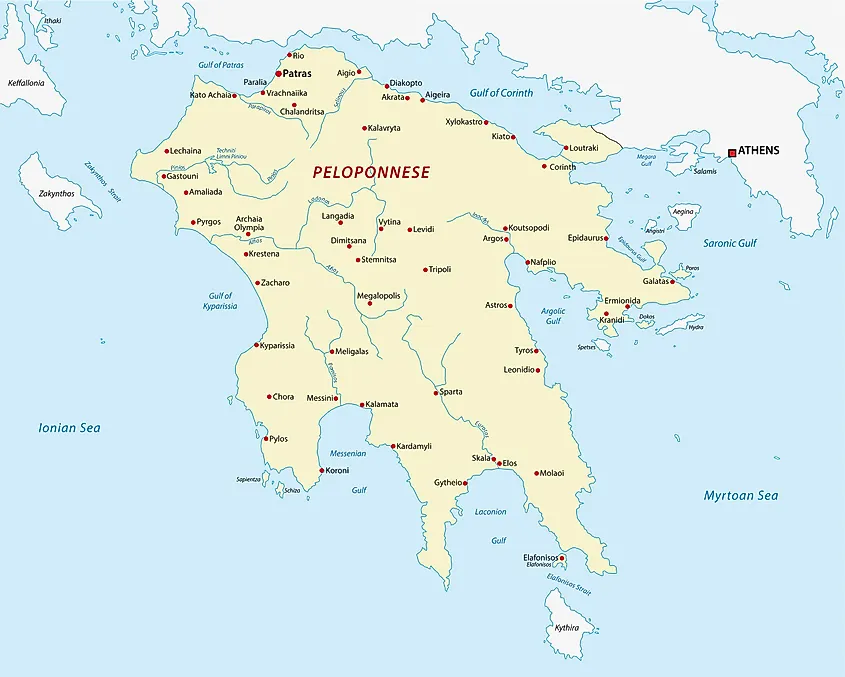
In terms of geographical regions, the Gulf of Corinth finds itself bordered by several significant areas. To the north lies the region of Central Greece, which includes the large prefecture of Aetolia-Acarnania. The northeastern edge of the Gulf touches the region of Thessaly, while to the east, the region of Attica extends to the outskirts of the Greek capital, Athens. The Peloponnese peninsula, home to the regions of Corinthia and Achaea, defines the southern border of the Gulf.
The presence of multiple geological formations shapes the Gulf's topography. A prominent example is the Corinth Rift, an active tectonic feature that runs along the Gulf's southern coast, causing frequent earthquakes in the region. Additionally, the Gulf's underwater landscape is characterized by a deep, narrow trench with a maximum depth of around 3,068 feet.
History
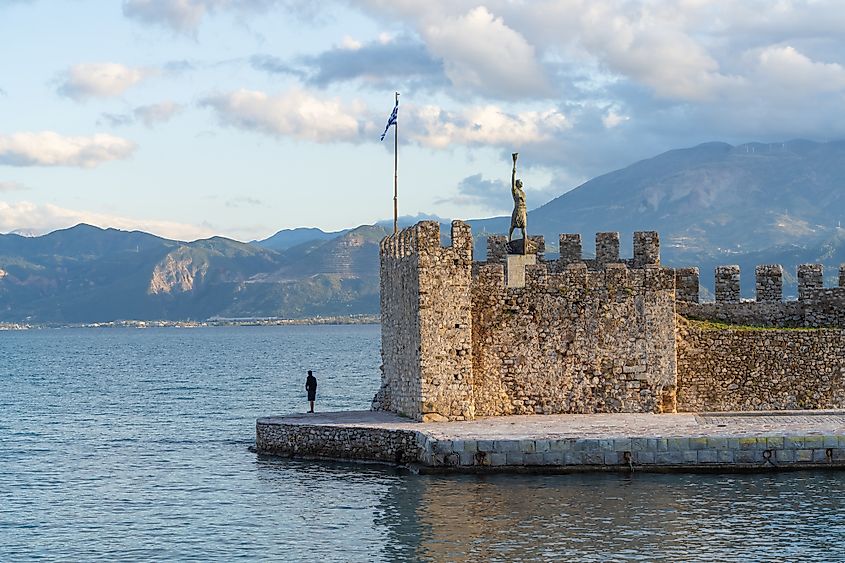
The Gulf has been a site of significant human activity and historical events since antiquity, primarily due to its strategic location and natural resources. First, the Mycenaean civilization, which thrived during the late Bronze Age from around 1600 to 1100 BCE, left a significant mark on the region surrounding the Gulf of Corinth. Archaeological evidence suggests that the Mycenaeans established several settlements and trade routes along the Gulf's coast, promoting economic and cultural exchange with other parts of the Mediterranean. One notable example is the ancient city of Mycenae, situated near the Gulf's eastern edge, which served as a major political and cultural center during this period.
Following the collapse of the Mycenaean civilization, the region experienced a dark age characterized by a decline in population and cultural activity. However, the Gulf of Corinth regained prominence during the Archaic period (circa 800 to 480 BCE), as various city-states emerged and began to compete for power and resources. The city of Corinth, strategically located on the Gulf's southern coast, grew into a major hub of commerce and naval power. During this time, the Corinthians constructed the Diolkos, an overland route that enabled the transportation of ships and goods across the narrow Isthmus of Corinth, further enhancing the region's economic significance.
Throughout the Classical period (480 to 323 BCE), the Gulf of Corinth continued to play a vital role in Greek history. In 480 BCE, the Battle of Artemisium took place in the waters off the northern coast of the Gulf as part of the Greco-Persian Wars. This battle, although inconclusive, marked a critical moment in the conflict between the Persian Empire and the Greek city-states. Later, during the Peloponnesian War (431 to 404 BCE), the Gulf's strategic location made it a focal point for naval skirmishes between Athens and Sparta, as both sides sought to control the vital trade routes that passed through the area.
The region's importance persisted during the Hellenistic period (323 to 31 BCE) and the Roman era (27 BCE to 395 CE). The city of Corinth, for instance, was conquered by the Romans in 146 BCE, subsequently rebuilt, and transformed into the capital of the Roman province of Achaea. The Gulf of Corinth facilitated trade and communication between the eastern and western parts of the Roman Empire, further solidifying its strategic significance.
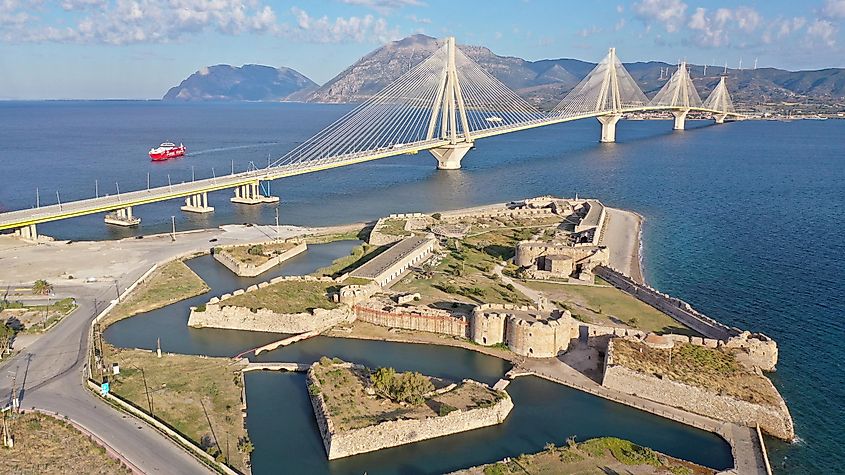
In the Byzantine era (395 to 1453 CE), the Gulf remained an essential maritime route and a hub of cultural exchange. The Byzantine Empire fortified key coastal cities, such as Patras and Corinth, to protect against external threats. The region eventually succumbed to Frankish control in the aftermath of the Fourth Crusade (1202 to 1204 CE), and various Latin states and principalities were established around the Gulf of Corinth, such as the Principality of Achaea and the Duchy of Athens.
During the Ottoman period (1453 to 1821 CE), the Gulf of Corinth served as a frontier zone between the Ottoman Empire and the Venetian Republic. The area experienced numerous conflicts as both powers vied for control over key coastal cities and fortresses. Ultimately, the Greek War of Independence (1821 to 1832) brought an end to Ottoman rule in the region, and the modern Greek state emerged, with the Gulf of Corinth once again becoming an integral part of Greece.
Climate
The climate of the Gulf of Corinth is predominantly Mediterranean, characterized by hot, dry summers and mild, wet winters. The region experiences a significant amount of sunshine throughout the year, with the sunniest months being June, July, and August. Rainfall is moderate, with the wettest months being November and December. However, it is important to note that rising sea levels and the influx of extreme weather patterns related to climate change are causing disturbances in the Gulf's regular patterns of climate.
Economy And Industry
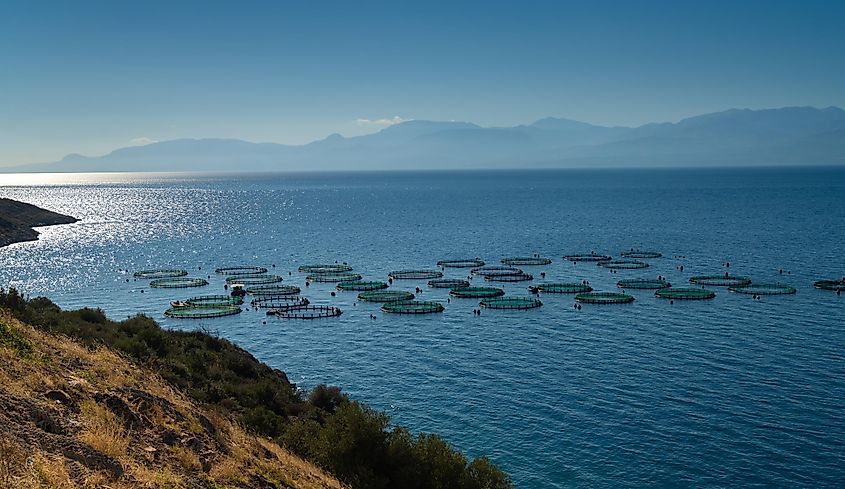
The economy and industry around the Gulf of Corinth are diverse and dynamic, with key sectors including agriculture, aquaculture, tourism, and energy production. Agriculture plays a crucial role in the region's economy, with the fertile lands surrounding the Gulf supporting the cultivation of crops such as olives, grapes, and citrus fruits. Olive oil and wine production are particularly important, with local varieties gaining international recognition.
Aquaculture is another significant industry in the area, with the Gulf's rich marine resources offering ideal conditions for the farming of fish and shellfish. Fishermen ply the waters, harvesting various species for both domestic consumption and export. The Gulf of Corinth also attracts tourists, who come to enjoy the beautiful coastline, pristine waters, and charming towns and villages. Tourism, in turn, supports a vibrant service industry, which includes hotels, restaurants, and other amenities catering to visitors.
Energy production is an emerging sector in the region, with the development of renewable energy projects such as wind farms and solar plants. The Gulf's consistent winds and high levels of sunshine make it an ideal location for these sustainable energy initiatives.
Flora And Fauna
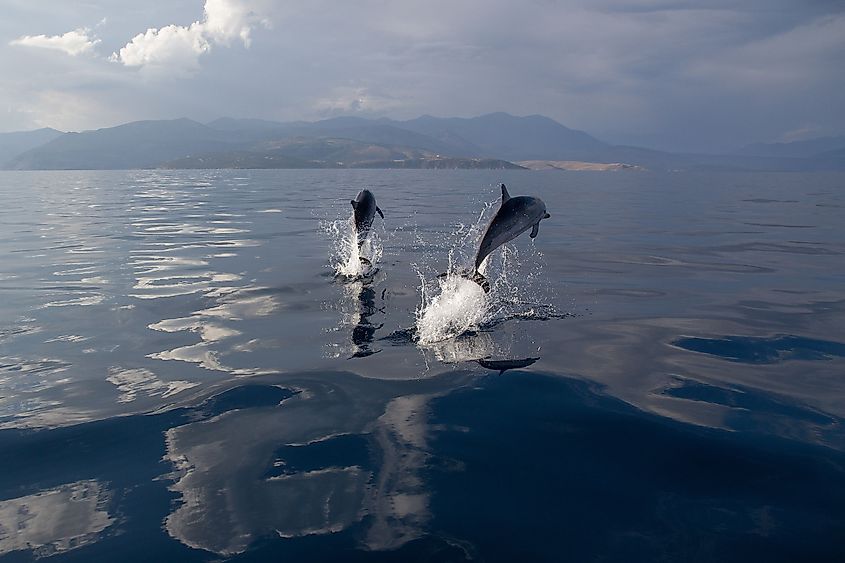
The Gulf of Corinth is home to a wide array of flora and fauna, both on land and in the water. The region's Mediterranean climate fosters the growth of various plant species, such as olive trees, grapevines, and citrus fruit trees. Additionally, the area is home to aromatic herbs, such as thyme, oregano, and rosemary, as well as a variety of wildflowers that bloom in spring and early summer.
In terms of fauna, the Gulf of Corinth is a vital habitat for marine life. Dolphins, sea turtles, and a multitude of fish species thrive in its waters. Fishermen commonly catch species like seabream, seabass, and sardines, while the endangered loggerhead sea turtle (Caretta caretta) nests on the sandy beaches around the Gulf. The region's diverse birdlife, including migratory species that visit during the changing seasons, hosts thousands of exotic animals like Flamingos, Dalmatian Pelicans, Egrets, Marsh Harriers, and more.
The inhabitants of the Gulf of Corinth, both past and present, take great pride in the region's capacity to sustain and support life through trade and harvest. However, this invaluable asset has also drawn the unwanted attention of war and dispute, owing to its strategic location and resourcefulness. Despite this, the current era of global stability and peace is cherished by the present generation of Greece, contrasting with the tumultuous past that has marked thousands of years of human history. However, as a geographical feature, the Gulf has existed far longer than those who have come and gone from its shores. This enduring presence entitles it to respect and preservation efforts, ensuring that future generations (of all species) may continue to benefit from it.










